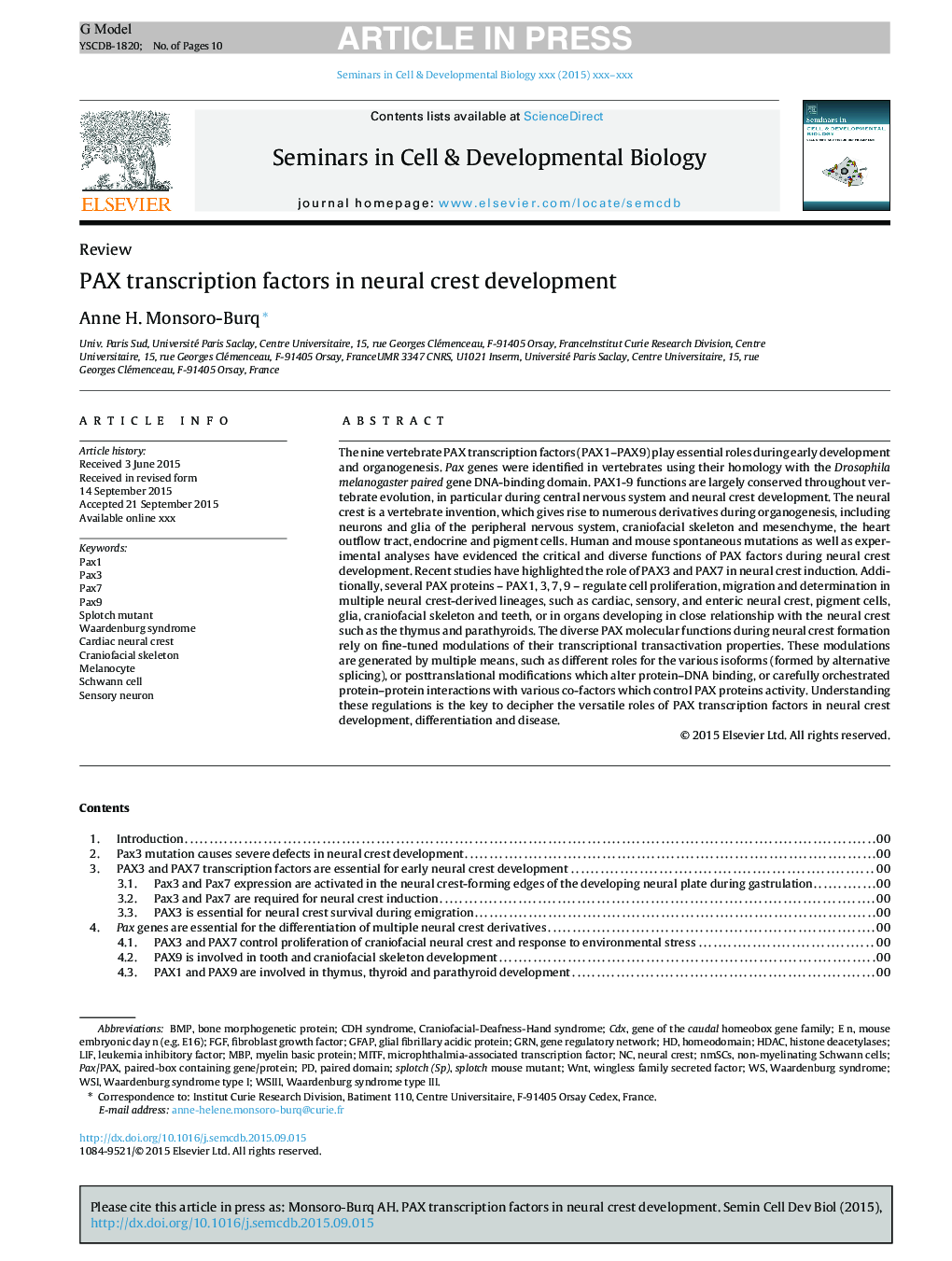| Article ID | Journal | Published Year | Pages | File Type |
|---|---|---|---|---|
| 8480332 | Seminars in Cell & Developmental Biology | 2015 | 10 Pages |
Abstract
The nine vertebrate PAX transcription factors (PAX1-PAX9) play essential roles during early development and organogenesis. Pax genes were identified in vertebrates using their homology with the Drosophila melanogaster paired gene DNA-binding domain. PAX1-9 functions are largely conserved throughout vertebrate evolution, in particular during central nervous system and neural crest development. The neural crest is a vertebrate invention, which gives rise to numerous derivatives during organogenesis, including neurons and glia of the peripheral nervous system, craniofacial skeleton and mesenchyme, the heart outflow tract, endocrine and pigment cells. Human and mouse spontaneous mutations as well as experimental analyses have evidenced the critical and diverse functions of PAX factors during neural crest development. Recent studies have highlighted the role of PAX3 and PAX7 in neural crest induction. Additionally, several PAX proteins - PAX1, 3, 7, 9 - regulate cell proliferation, migration and determination in multiple neural crest-derived lineages, such as cardiac, sensory, and enteric neural crest, pigment cells, glia, craniofacial skeleton and teeth, or in organs developing in close relationship with the neural crest such as the thymus and parathyroids. The diverse PAX molecular functions during neural crest formation rely on fine-tuned modulations of their transcriptional transactivation properties. These modulations are generated by multiple means, such as different roles for the various isoforms (formed by alternative splicing), or posttranslational modifications which alter protein-DNA binding, or carefully orchestrated protein-protein interactions with various co-factors which control PAX proteins activity. Understanding these regulations is the key to decipher the versatile roles of PAX transcription factors in neural crest development, differentiation and disease.
Keywords
PAX1PAX3WntMITFCDXPAX9WSIHDACFGFMBPGFAPPax7LIFCraniofacial skeletonpaired domainSchwann cellWaardenburg syndromeGene regulatory networkleukemia inhibitory factorfibroblast growth factorMicrophthalmia-associated transcription factorneural crestBMPMelanocyteSensory Neuronhomeodomainhistone deacetylasesGlial fibrillary acidic proteinBone morphogenetic proteinMyelin basic proteinCardiac neural crestGRN
Related Topics
Life Sciences
Biochemistry, Genetics and Molecular Biology
Cell Biology
Authors
Anne H. Monsoro-Burq,
